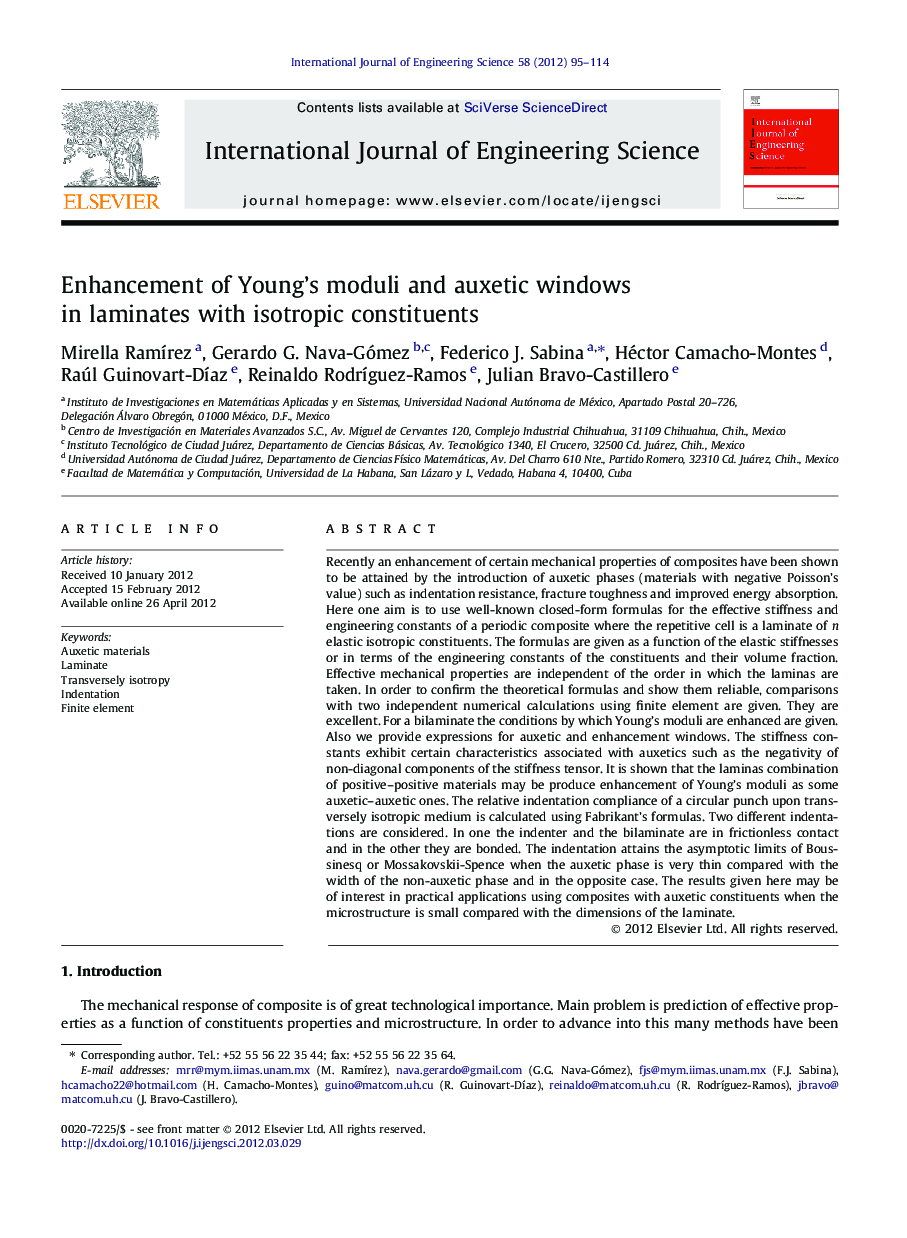| Article ID | Journal | Published Year | Pages | File Type |
|---|---|---|---|---|
| 825115 | International Journal of Engineering Science | 2012 | 20 Pages |
Recently an enhancement of certain mechanical properties of composites have been shown to be attained by the introduction of auxetic phases (materials with negative Poisson’s value) such as indentation resistance, fracture toughness and improved energy absorption. Here one aim is to use well-known closed-form formulas for the effective stiffness and engineering constants of a periodic composite where the repetitive cell is a laminate of n elastic isotropic constituents. The formulas are given as a function of the elastic stiffnesses or in terms of the engineering constants of the constituents and their volume fraction. Effective mechanical properties are independent of the order in which the laminas are taken. In order to confirm the theoretical formulas and show them reliable, comparisons with two independent numerical calculations using finite element are given. They are excellent. For a bilaminate the conditions by which Young’s moduli are enhanced are given. Also we provide expressions for auxetic and enhancement windows. The stiffness constants exhibit certain characteristics associated with auxetics such as the negativity of non-diagonal components of the stiffness tensor. It is shown that the laminas combination of positive–positive materials may be produce enhancement of Young’s moduli as some auxetic–auxetic ones. The relative indentation compliance of a circular punch upon transversely isotropic medium is calculated using Fabrikant’s formulas. Two different indentations are considered. In one the indenter and the bilaminate are in frictionless contact and in the other they are bonded. The indentation attains the asymptotic limits of Boussinesq or Mossakovskii-Spence when the auxetic phase is very thin compared with the width of the non-auxetic phase and in the opposite case. The results given here may be of interest in practical applications using composites with auxetic constituents when the microstructure is small compared with the dimensions of the laminate.
